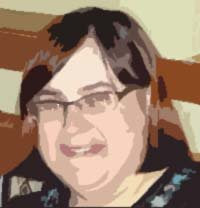The idea is then to make a line for an Ozobot to follow using the ⅓ portion of the area calculated. The graph paper's single square is the perfect width for the line the Ozobot can follow. Or if you have the more advanced Ozobot Bit or Ozobot Evo, students can create a computer program and upload it to the Ozobot to cover ⅓ of the area calculated. The Ozobot can be programmed using simple block coding at Ozoblockly.com. Then, program the Ozobot to create the maze by itself. Or, use a Sphero, which can be programmed with the Tickel App, in much the same way with larger graph paper and use makerspace items like Lego and Keva Planks to create the maze.
Sunday, April 29, 2018
Ozobots and Math
I always want the Makerspace in the library to be a place of STEM learning. I designed a lesson using graph paper and the formula for area of a rectangle (Area = width times length), encouraging students to figure out the area of the graph paper and then figuring out ⅓ of the area on which they would create a maze. It would be simple just to count the spaces on the graph paper but that would take a long time. So I introduced them to this Flocabulary video on area and perimeter:
The idea is then to make a line for an Ozobot to follow using the ⅓ portion of the area calculated. The graph paper's single square is the perfect width for the line the Ozobot can follow. Or if you have the more advanced Ozobot Bit or Ozobot Evo, students can create a computer program and upload it to the Ozobot to cover ⅓ of the area calculated. The Ozobot can be programmed using simple block coding at Ozoblockly.com. Then, program the Ozobot to create the maze by itself. Or, use a Sphero, which can be programmed with the Tickel App, in much the same way with larger graph paper and use makerspace items like Lego and Keva Planks to create the maze.
The idea is then to make a line for an Ozobot to follow using the ⅓ portion of the area calculated. The graph paper's single square is the perfect width for the line the Ozobot can follow. Or if you have the more advanced Ozobot Bit or Ozobot Evo, students can create a computer program and upload it to the Ozobot to cover ⅓ of the area calculated. The Ozobot can be programmed using simple block coding at Ozoblockly.com. Then, program the Ozobot to create the maze by itself. Or, use a Sphero, which can be programmed with the Tickel App, in much the same way with larger graph paper and use makerspace items like Lego and Keva Planks to create the maze.
Subscribe to:
Post Comments (Atom)






No comments:
Post a Comment